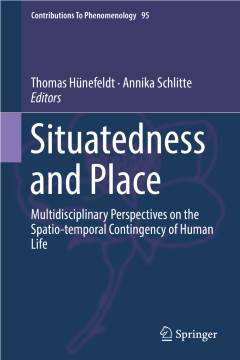Repository | Book | Chapter

(2018) Situatedness and place, Dordrecht, Springer.
Situating interaction in peripersonal and extrapersonal space
empirical and theoretical perspectives
Shaun Gallagher
pp. 67-79
In this chapter I focus on the relationship between embodied intersubjective interactions and the kind of spaces that shape and are shaped by such interactions. After clarifying some of the theoretical background involved in questions about social cognition, I review several empirical studies that suggest that social interactions and social relations can change our perceptions of the reachable (peripersonal) space around us, as well as the more distant (extrapersonal) space beyond our immediate reach. These perceptions operate within the framework of material culture and impact our experience of space as it is organized by cultural artifacts and practices. In this respect, the analysis provided by Material Engagement Theory (Malafouris L, How things shape the mind. MIT Press, Cambridge, MA, 2013) helps us understand the role of material arrangements as they define affordances for action and interaction, correlated to transformations from individual body-schematic processes to intercorporeal processes in joint action. These same processes can be carried over into discussions of space and place as experienced on the larger stages of social-cultural activities.
Publication details
DOI: 10.1007/978-3-319-92937-8_5
Full citation:
Gallagher, S. (2018)., Situating interaction in peripersonal and extrapersonal space: empirical and theoretical perspectives, in A. Schlitte & T. Hünefeldt (eds.), Situatedness and place, Dordrecht, Springer, pp. 67-79.
This document is unfortunately not available for download at the moment.



